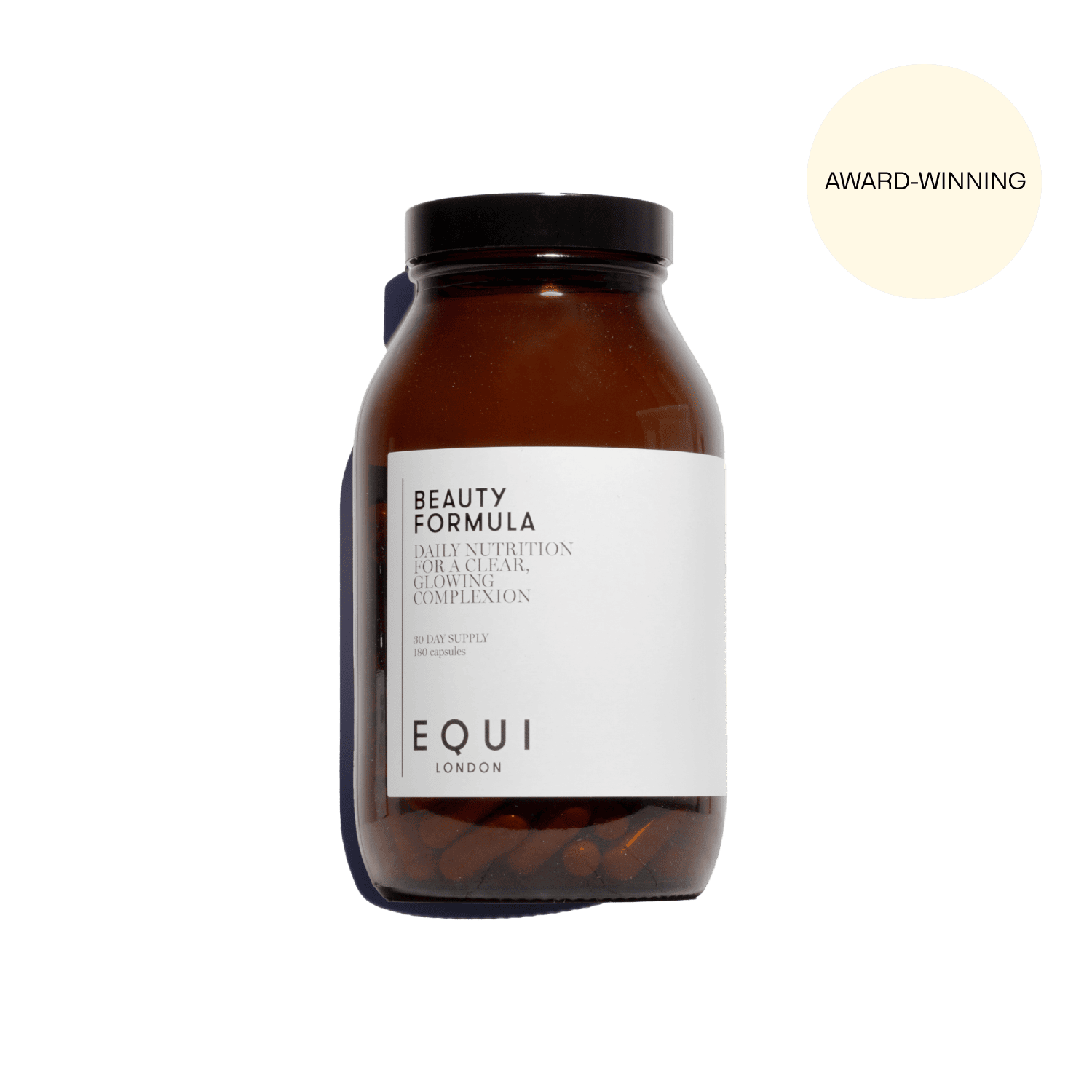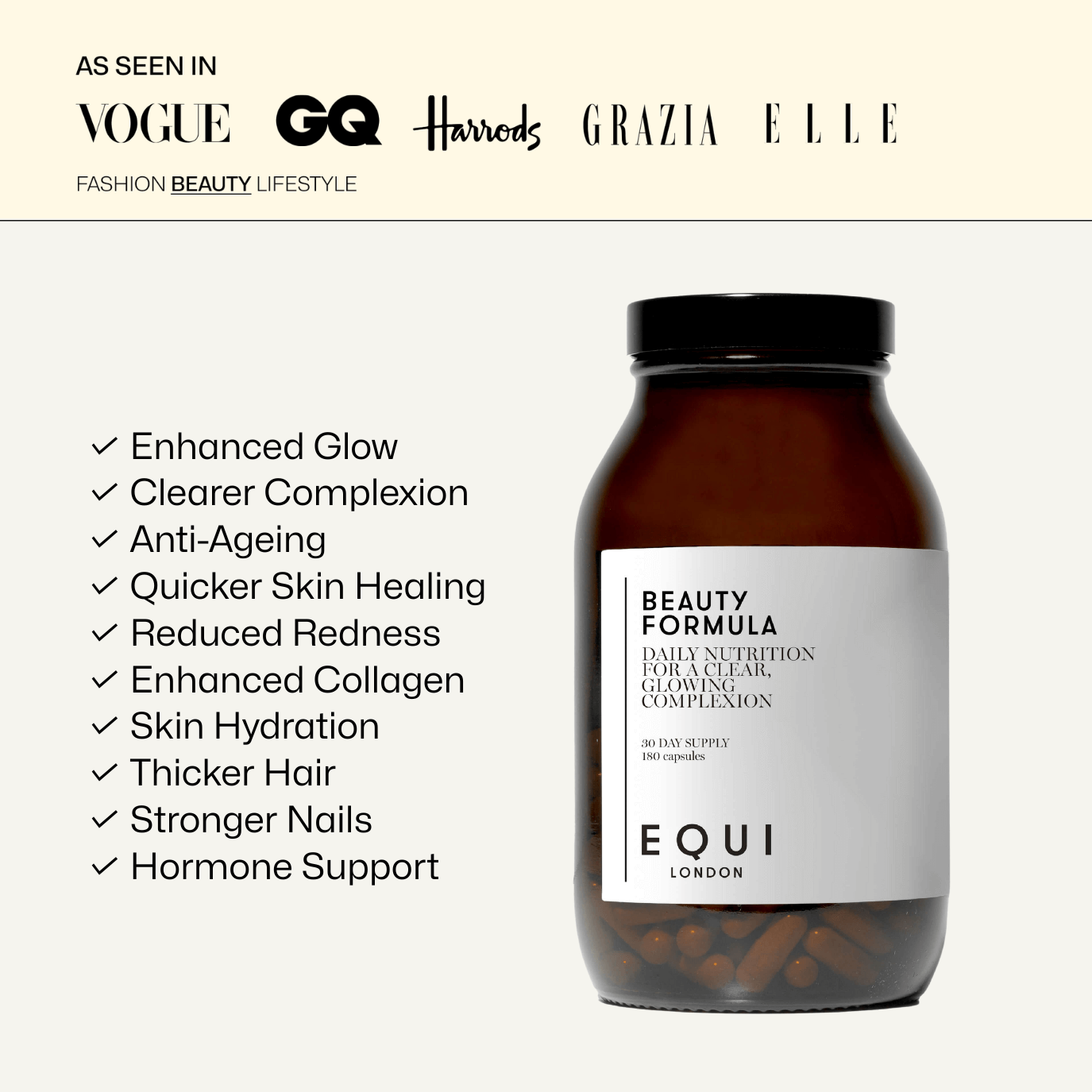
You may have heard about the gut-brain axis, but how about the gut-skin axis? Understanding more about the link between our gut and our skin, may be the answer to beautiful skin! Keep reading for the inside scoop on how nurturing our microbiome and supporting good gut health can lead to healthy skin.
What exactly is the gut-skin axis?
The gut-skin axis is also known as the gut-skin connection and refers to the bidirectional communication between the gut microbiome and the skin, which plays a critical role in maintaining skin health and preventing skin conditions. To simplify, this means that a healthy gut is necessary for healthy skin!
Give your microbiome some love!
Maintaining a healthy gut microbiome is essential for maintaining overall health as it’s responsible for processing and absorbing nutrients, fighting pathogens, and regulating the immune system. More recently, research has shown that the health of the gut can also play a significant role in skin health – keep reading for more!
A balanced gut microbiome can help reduce inflammation, which is a common factor in skin conditions such as acne, eczema, and psoriasis. Inflammation can disrupt the skin barrier function, leading to an increase in skin permeability and sensitivity. Studies have shown that a healthy gut microbiome can help reduce any inflammation in the body and improve skin health. Research has also linked gut microbiome imbalances with various skin conditions. For example, those with acne have a distinct gut microbiome composition compared to individuals without acne (1) and rosacea is linked with a reduced diversity in the gut microbiome (2). Overall, maintaining a healthy gut microbiome is essential for maintaining healthy skin!
Eat your way to healthy skin?
“The foods we eat can have a significant impact on the gut microbiome and its function, which in turn affects the skin microbiome and skin health”.
Incorporating nutrient-dense foods, such as fruits, vegetables, whole grains, lean proteins, and healthy fats, can promote optimal gut and skin health by providing essential vitamins, minerals, antioxidants, fibre, and pre/probiotics. These nutrients have been shown to have anti-inflammatory and antioxidant properties, which can help reduce skin inflammation and oxidative stress, leading to better skin health. For example, studies have shown that high-fibre diets rich in fruits and vegetables are associated with a lower risk of acne, with a significant reduction in breakouts (3).
Omega-3 fatty acids
are essential fats that are found in oily fish, flaxseeds, and walnuts, among other foods. Studies highlight these fats help to reduce inflammation in the gut and skin, which can promote healthy skin aging and improve conditions such as acne and psoriasis (4).
Probiotics
can improve the skin barrier function and reduce inflammation in individuals with acne-prone skin (5). For example, research shows us that supplementing probiotics for 12 weeks leads to significant improvements in acne severity, skin hydration, and skin barrier function, suggesting a positive relationship between gut health and skin health (6). We also know that the ‘good’ gut bacteria Lactobacillus can help improve skin hydration and decrease skin sensitivity in individuals with dry skin (7). Here at Equi, not only does Beauty Formula contain 1.5 billion probiotics, but we’ve gone one step further than this and included pre-biotics, such as apple pectin which help feed the microbiome. Digestive enzymes such as papain and bromelain have also been included to help aid digestion and ease digestive symptoms such as bloating and constipation.
Green tea
is rich in polyphenol micronutrients that promote a healthy gut microbiome and can improve skin health. Green tea consumption has been shown to increase the abundance of beneficial gut bacteria, resulting in improved skin hydration and elasticity in women (8).
On the other hand, avoiding certain trigger foods, such as processed foods, high-sugar foods, and dairy products, can also help improve gut health and reduce skin inflammation. Studies have shown that these foods can disrupt the gut microbiota balance and contribute to skin inflammation and acne development. For example, several studies support the association between dairy intake and acne development, likely due to the hormones found in milk and insulin-like growth factor-I (IGF-I) (9).
In conclusion, incorporating nutrient-dense foods and avoiding certain trigger foods can have significant impacts on the gut-skin axis and promote optimal gut and skin health. Research shows us that a diet rich in fruits, vegetables, and fibre can improve skin health and reduce acne, while avoiding processed foods, high-sugar foods, and dairy products can help reduce skin inflammation and promote skin health.
Stress, sleep, and the gut-skin axis
Stress, can have a significant impact on gut health, potentially leading to an imbalanced gut microbiome known as gut dysbiosis (10,11). Gut dysbiosis has been linked to skin health issues, including acne, rosacea, and eczema. Studies have found that reducing inflammation and dysbiosis in the gut by balancing the microbiome can lead to improvements in skin health (12). Inadequate sleep can also disrupt the gut-skin axis. Studies have shown that poor sleep quality can lead to skin aging and aggravate skin conditions (13,14). In a nutshell, stress management and good sleep hygiene, by may be essential for healthy skin!
References:
-
Jain, S., Gautam, V., Naseem, S., & Vyas, A. (2018). Microbial flora and resistance pattern in acne vulgaris: A study from tertiary care centre in North India. Journal of Clinical and Aesthetic Dermatology, 11(5), pp. 21-25.
-
Parodi, A., Paolino, S., Greco, A., Drago, F., Mansi, C., Rebora, A., & Savarino, V. (2018). Small intestinal bacterial overgrowth in rosacea: Clinical effectiveness of its eradication. Gut, 67(7), pp. 1435-1442.
-
Bowe, W. P., Patel, N. B., & Logan, A. C. (2017). Acne vulgaris, probiotics and the gut-brain-skin axis-back to the future? Gut Pathogens, 9(1), pp. 1-11.
-
Farkas A, Kemeny L. (2019). Interplay between the Immune System and Microbiota in Inflammatory Bowel Disease: An Overview. Nutrients, 11(9), pp. 2277.
-
Salem, I., Ramser, A., Isham, N., & Ghannoum, M.A. (2018). The gut microbiome as a major regulator of the gut-skin axis. Frontiers in Microbiology, 9, pp. 1459.
-
Kim, J., Ko, Y., Park, Y. K., Kim, N. I., & Ha, W. K. (2014). Dietary effect of lactoferrin-enriched fermented milk on skin surface lipid and clinical improvement of acne vulgaris. Nutrition, 30(8), pp. 965-973.
-
Candotto, V., Failla, C.M., Marascio, N., Cordaro, M., & Russo, A. (2019). Lactobacillus rhamnosus SP1 and the skin: A probiotic perspective. Journal of Investigative Dermatology, 139(5), pp. 1071-1074.
-
Fujii T, Wakaizumi M, Ikami T, Saito M. (2017). Green Tea Catechins Suppress the Oxidative Stress Response and Metabolic Disruptions Associated with Ovariectomy-Induced Obesity and Type 2 Diabetes. Nutrients, 9(8), pp. 771.
-
Katta, R., & Kramer, M. J. (2018). Skin and diet: An update on the role of dietary change as a treatment strategy for skin disease. Skin Therapy Letter, 23(1), pp. 1-5.
-
Chuang K, Nguyen E, Sergeev Y, Badea TC. (2015) Novel Heterotypic Rox Sites for Combinatorial Dre Recombination Strategies, G3 (Bethesda), 6(3), pp. 559-71.
-
Pauniaho SL, Heikinheimo O, Vettenranta K, Salonen J, Stefanovic V, Ritvanen A, Rintala R, Heikinheimo M. (2013). High prevalence of sacrococcygeal teratoma in Finland - a nationwide population-based study. Acta Paediatrica. 102(6), pp. 251-6.
-
Kim, H.J., Kim, J., Park, Y.J., Chun, J., & Jung, Y.J. (2011). Microbial Community Analysis in the Healthy and Atopic Skin of Korean Individuals. Journal of Investigative Dermatology, 131(3), pp. 644-650.
-
Sundelin, T., et al. (2013). Altered sleep architecture and stable sleep apnea in chronic insomnia: a controlled study. Sleep, 36(3), pp. 343-351.
-
Oyetakin-White, P., et al. (2015). Does poor sleep quality affect skin aging? Clinical and Experimental Dermatology, 41(2), pp. 146-150.












